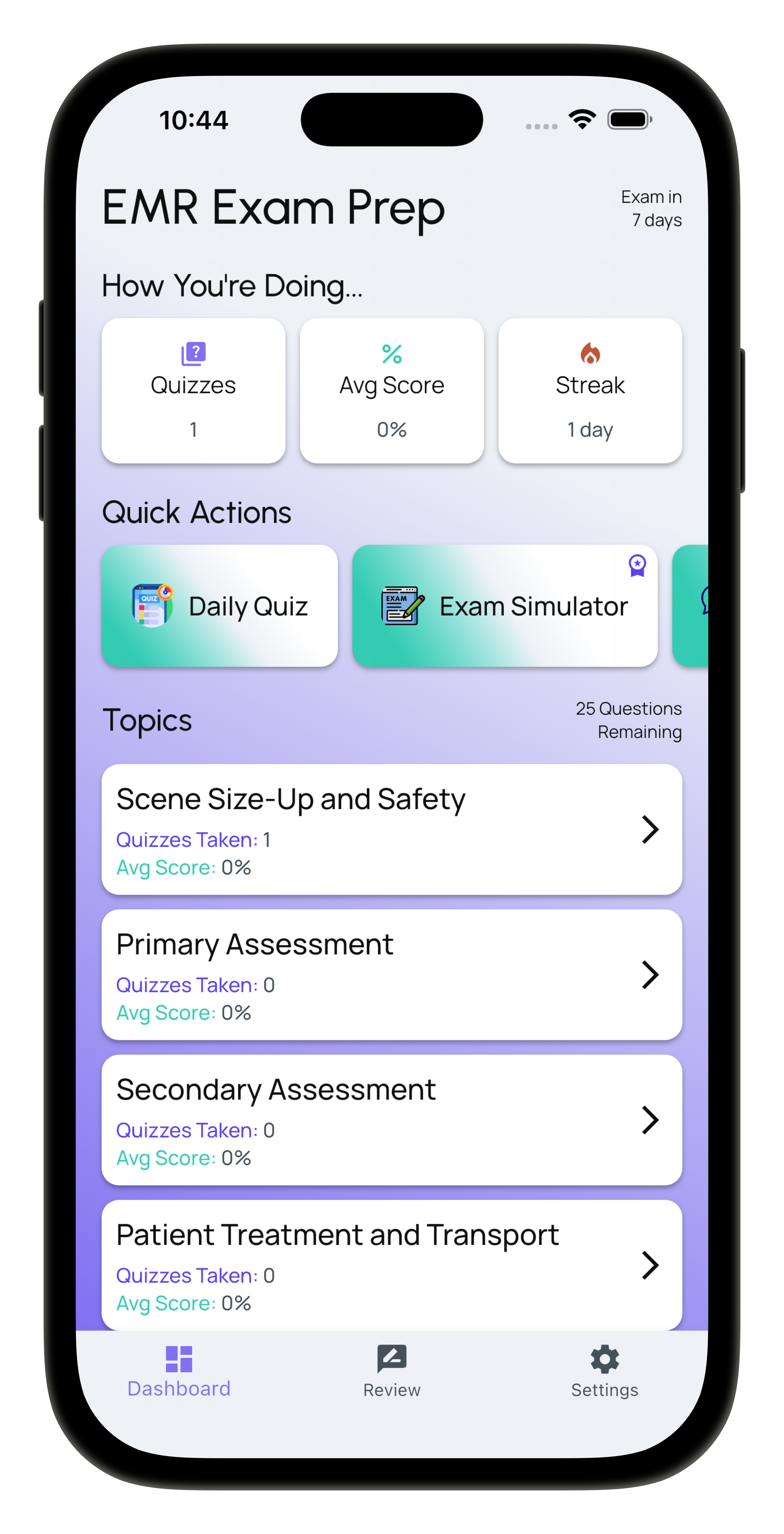EMR Exam Prep
Embarking on a journey to become an Emergency Medical Responder (EMR) is an exciting and fulfilling path. As a new responder, you are stepping into a vital role, ready to provide care and support during emergencies. To help you succeed in your training and ensure you are well-prepared for real-world situations, this blog post will cover the essential patient care basics, practical training tips, real-world applications, career guidance, and safety considerations.
Understanding Basic Emergency Medical Concepts and Skills
As an EMR, you’ll need to master a core set of skills to provide effective care. Here are some of the fundamental concepts and skills you should focus on:
1. Assessment Skills
- Primary Assessment: Learn the ABCs—Airway, Breathing, and Circulation. Quickly assess the patient’s condition to determine if they are responsive and breathing adequately.
- Secondary Assessment: Once the primary assessment is complete, gather more information about the patient’s medical history, medications, and allergies.
2. Basic Life Support (BLS)
- CPR: Master the techniques of cardiopulmonary resuscitation (CPR) for adults, children, and infants. This includes chest compressions and rescue breaths.
- AED Usage: Familiarize yourself with Automated External Defibrillators (AEDs) and their proper use in cases of cardiac arrest.
3. First Aid Skills
- Wound Care: Understand how to clean and dress wounds properly to prevent infection.
- Choking Relief: Be proficient in the Heimlich maneuver and back blows for adults and children, and know how to perform infant choking relief.
4. Communication Skills
- Patient Interaction: Practice how to communicate calmly and effectively with patients, ensuring they feel safe and understood.
- Reporting to EMS: Learn how to relay critical information to advanced medical personnel upon their arrival.
Practical Training and Study Tips
To excel in your EMR training, it’s essential to adopt effective study habits and practical skills practice. Here are some tips:
1. Utilize EMR Exam Prep Resources
- Use the EMR Exam Prep app to access practice questions, flashcards, and study guides tailored for your certification exam. Regularly test your knowledge to reinforce learning.
2. Hands-On Practice
- Engage in hands-on training sessions. These may include CPR training with mannequins, practicing bandaging techniques, or participating in mock emergency scenarios.
3. Form Study Groups
- Collaborate with fellow students to review concepts and quiz each other. Group discussions can enhance understanding and retention of material.
4. Simulate Real-World Scenarios
- Participate in simulations that mimic real emergency situations. This practice will build your confidence and help you apply your skills under pressure.
Real-World Application Examples
Understanding how to apply your skills in real-world situations is crucial for your growth as an EMR. Here are a few examples:
Scenario 1: Cardiac Arrest
Imagine you arrive at a scene where a bystander is performing CPR on an unresponsive adult. You quickly assess the situation, take over CPR, and ask someone to retrieve an AED. After using the AED and continuing CPR until EMS arrives, your actions could potentially save a life.
Scenario 2: Severe Bleeding
In a different situation, you encounter a patient with a deep laceration on their arm. You assess the wound, apply direct pressure, and use a sterile dressing. You also check for signs of shock and monitor the patient’s vital signs while waiting for advanced care.
Scenario 3: Choking Incident
While at a community event, a child begins to choke on a piece of food. You recognize the signs and calmly perform back blows and the Heimlich maneuver until the food is expelled and the child begins to breathe normally again.
Career Guidance for New EMRs
As you begin your career as an EMR, consider the following tips to help navigate your professional journey:
1. Networking
- Connect with other emergency responders and professionals in your community. Networking can lead to mentorship opportunities and job prospects.
2. Continuing Education
- Stay current with the latest in emergency care by participating in workshops, attending conferences, and pursuing advanced certifications.
3. Volunteer Opportunities
- Gain experience by volunteering with local EMS services, fire departments, or community organizations. This hands-on experience will enhance your skills and understanding of emergency response.
Safety Considerations and Best Practices
Safety is paramount in emergency medical response. Here are some key considerations:
1. Personal Safety
- Always assess the scene for hazards before approaching a patient. Make sure it is safe for you and your team to provide care.
2. Infection Control
- Follow protocols for infection control, including the use of gloves, masks, and proper hand hygiene to protect both yourself and your patients.
3. Patient Safety
- Ensure the patient is comfortable and secure while you provide care. Monitor their condition continually and be prepared to adapt your approach as necessary.
4. Adherence to Protocols
- Familiarize yourself with local protocols and guidelines. Consistently applying these procedures will enhance your effectiveness and ensure you provide the best care possible.
Conclusion
As a new Emergency Medical Responder, you have the opportunity to make a significant impact in your community by providing critical care during emergencies. By mastering the basics of patient care, engaging in thorough training, and applying your skills in real-world scenarios, you will build the foundation for a successful career in EMS. Remember, the EMR Exam Prep app is here to support you every step of the way with valuable resources tailored for your training needs. Embrace your journey, stay committed to learning, and know that you are making a difference in the lives of those you serve.
Starting your EMR certification journey? Try EMR Exam Prep for practice questions and study materials designed to help you succeed as an Emergency Medical Responder.
